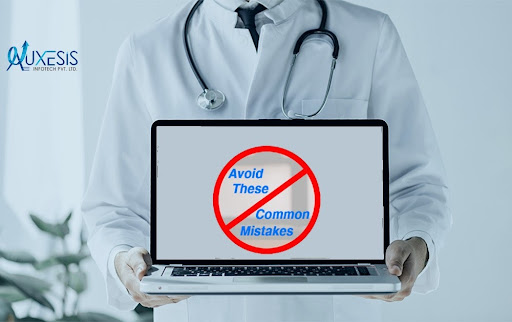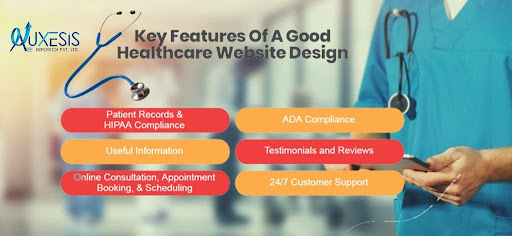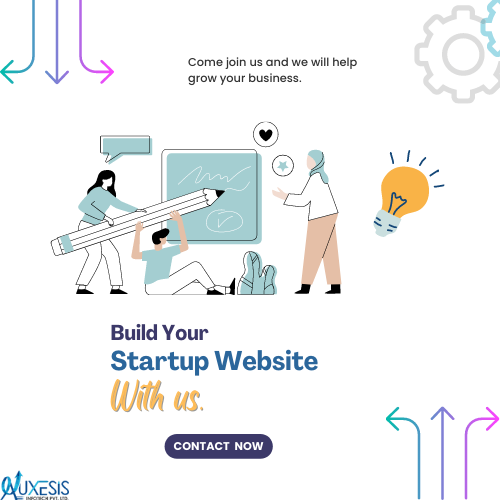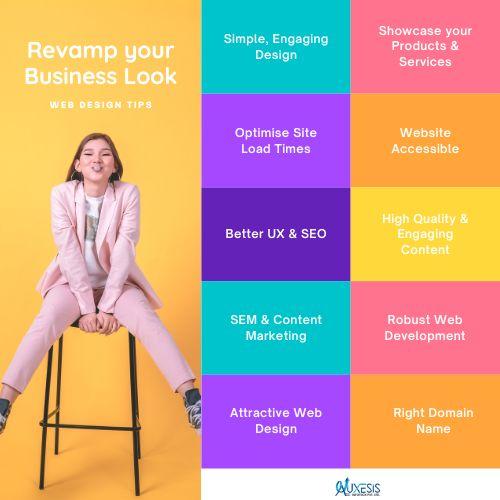
|
Table of Contents Introduction
|
If you’re into the healthcare industry and want to build a website, meeting the needs of your customers is the way to make it successful. Whether you are a business, a primary care physician, dentist, chiropractor, orthopedic surgeon, or a medical professional in general, your website should be built on the concept of serving your customers.
But, how would you address your customer and their needs and expectations?
Here you need to know their pain points and figure out what patients are actually looking for. Yes, they need a medical solution, but their expectations won’t be restricted to just that. They might also want an intuitive user experience along with credibility so they can bank upon you without a doubt.
Apart from this, there are a few technical aspects as far as website design and content is concerned that would better equip you to address your customers and offer them a solution.
Here’s what patients are looking for that you can include in your healthcare website design:
- Accolades or achievements on your part
- Reviews and Testimonials’
- FAQs for common queries
- Information
- Location
- Contact information
- An intuitive UI with rightly placed CTAs
- Number of services available
Providing the crucial information will help you appeal to a wide number of customers and create a personalized user experience for them. However, as businesses meet their customers when they are in the mid of their journey, they result in an underperforming healthcare website.
We have discussed some of the mistakes in the section below, let’s have a look at each one of them in detail.
Common Mistakes That Medical Websites Should Avoid Making in Their Design

A healthcare website is like another search engine that offers crucial information. As a part of the healthcare industry, you need to make sure that you offer a great user experience along with the necessary information.
Focus on building a website that captures your customers’ attention and doesn’t disrupt it. Thus, we are here with a few common mistakes that you should avoid making at all costs:
- Less information, more fluff
Filling up your website with fluff and skimming the information on crucial aspects is a blunder that you must avoid. By fluff, we mean superficial or generalized information without detailing which is not useful and businesses miss the mark.
You need to understand that people visit your website because they need information and not fillers and fluff. Try to avoid including the following:
- Word sentences
- Superficial language
- Pointless information
- Your opinions
- Complicated terminology
- Industry lingo and jargon
- Intensifiers like very best, extremely well, and more
- Your personal expressions
- Difficult to navigate
Navigation makes up most part of the user experience. If your users are finding it difficult to get to a task or the information they desire, probably you need to work on your navigation. It simply looks unprofessional and will add up to visitors’ frustration. Here are a few things that you should avoid doing on your healthcare website:
- Non-standardized style
- Generic labels
- Dropdown menus
- Too many items at one place
- Wrong placement or order of items
- Disrupting design that lacks direction
- Wrongly placed CTAs
- Not mobile optimized
- No clarity in fonts and the entire text of the website
- Not SEO friendly
When it comes to SEO anyone can market the website, create medical or healthcare-related content, or build links. But, a few know the rules of ranking on the internet, and thus, fall into the trap of making mistakes.
As a result, you might miss getting your website ranked and lose a large chunk of the audience. Here are a few things that you should avoid on your healthcare website:
- Using nonsensical URLs without keywords and complex structure
- Duplicate content or inaccessible content
- Skipping title tags and meta descriptions
- Not providing context with schema
- Missing quality links
- No space for internal linking
- Loading too many resources in one page
- No SSL certification for website security
- Too many pop-ups that cover main content
- No social media links
- Dull, unprofessional, unattractive content
Including dull content without a storyline or a structure is not going to yield any results. Moreover, it distracts the customers, impacts their credibility, and harms their reputation, which will cost you heavily in the long run. Let’s have a look at the common content mistakes you should avoid making on your website:
- Not focusing on the reader
- Grammatical errors and wrong spellings
- Not SEO optimized
- Not proofread
- Forgo data
- No personalization
- Lacks structure and hierarchy
- Too pushy with marketing
- Thoughtless and meaningless content
So, these were the common mistakes that people usually make and should avoid. To make your healthcare website mistake-free, you need to abide by specific principles that we have discussed in the section below. Let’s have a look at each one of them.
What are the Most Important Principles of Web Design?

There are many platforms like Drupal, Sitecore, and WordPress to build health or wellness websites. But when it comes to the website designing principles, they remain for all healthcare websites irrespective of the platform on which they are being built.
Website designing principles ensure a great balance of usability and aesthetics that helps enhance the user experience. When it comes to medical website designs, delivering the right information is important because it has much to do with people’s wellbeing.
Apart from this, there are a few principles that you should abide by, let’s have a look at them.
- Know the Website Purpose
The first thing, to begin with, is the purpose of the website because that gives you a clear idea of what to include and what to discard in a healthcare website design. For medical website designs, it is crucial to ensure clear information about the services, medical equipment, appointments, and other important aspects.
Here the sole purpose is not branding or spreading awareness about the healthcare organization, but to ensure better connectivity with customers be it patients, healthcare professionals, pharmacists, or other businesses.
Apart from this, the common goal of building a healthcare website is to attract patients, serve an existing customer base with useful information and 24/7 support, community service, and a referral network to get referrals from other physicians.
- Simplicity and Consistency across the Website
Maintaining simplicity, intuitiveness, and consistency across the entire website enhances user experience. The reason is it gives needed breaks to users for focusing on the task at hand and completing it quickly. Moreover, it eliminates the pain of browsing the entire website for the sake of the tiny information they need.
To maintain consistency and simplicity, you should ensure proper page layout and a structured menu. Work on the font size, color palette, placement of icons and other elements, and typography to create a visual hierarchy. Don’t overcrowd a web page with loads of information; instead, segregate it according to the priority considering customers’ perspective.
- Page Load Time
Page load time is one of the major factors that drive a customer to either continue browsing your website or leave it. Remember, people visiting a healthcare website are usually in a rush most of the time and are seeking something.
They need quick information and when they miss anything crucial, it adds up to their frustration. Make sure that your healthcare website loads within three seconds, when a user clicks on it.
You can consider the following for your healthcare website:
- Use small-sized images, for which you can use Gzip to compress files
- Minify CSS and JavaScript
- Clean up your media library
- Reduce redirects
- Enable browser caching
- And, opt for a performance-optimized hosting solution
- Ensure Mobile Friendliness
There is no doubt that smartphones have become an essential aspect of people’s daily life. Most of the time goes on surfing the internet for information, especially for health-related information and common medical practices.
If your website is not optimized for mobile devices, you may lose a large chunk of the audience. Thus, it is essential to ensure mobile responsiveness for your healthcare website.
Here’s what you can do quickly to ensure mobile-friendliness:
- Avoid text blocking ads and popups
- Use large and clear font size
- Avoid using flash
- Turn off autocorrect for forms
- Consider adding viewpoint meta tag
- Adaptable button sizes that work equally well on desktop and mobile
- Easy Navigation
Easy navigation is the pillar of user experience and covers numerous areas. How high you will rank on Google pretty much depends on how users navigate your website, whether you like to continue browsing or your website has a high bounce rate.
We can say that it makes most of a website and ultimately affects your website traffic and conversions. To ensure smooth navigation for your healthcare website, here are a few things you can do.
- Try using more key phrases and descriptive labels at key places to ensure relevance
- Avoid format-based navigation like generic labels such as whitepapers, videos, or ads
- Opt for a mega menu if you have a big website with numerous services and products
- Use the limited number of menu items and don’t overcrowd your website with web pages
- Focus on following the right order for your website and place crucial information at the beginning or end of the website
|
Create an error-free healthcare website under the supervision of the best professionals. |
After knowing the important web designing practices in digital healthcare websites, let’s see the important features you shouldn’t miss including in your website.
Important Features That Your Healthcare Website Must Have

Not many know, but features somewhere also drive traffic to your wellness website or healthcare website. Apart from that, features are also important to make it easier for businesses to embrace digital healthcare. However, features need to match constantly evolving needs in the healthcare niche.
To ensure that your healthcare website meets the objectives and goals of the medical industry, here are a few features that you should consider including.
- Patient Records and HIPAA Compliance
HIPAA (Health Insurance Portability and Accountability Act) compliance ensures protection for sensitive information related to patients like their medical history or other records. It directs healthcare providers and companies to exercise strict control over data privacy.
Your healthcare website design should adhere to HIPAA standards as it increases personal privacy, streamlines administrative work, and secures the process of sharing sensitive information.
- ADA Compliance
ADA compliance is also important that you must ensure implementing in your medical website. Accessibility is the basic need of every visitor and ADA does just that. It ensures easy accessibility for the disabled such as blind, deaf, or in-mobile.
The four key points you need to ensure accessibility according to ADA compliance are that your website should be perceivable, understandable, functional, and robust.
- Useful Information
Another important thing that your healthcare website design can’t afford to miss is the useful information. You need to understand that users come to your site when they are in a rush, you should provide quick information and avoid giving them your website tour. Also, it ensures a professional-looking healthcare provider business profile.
Here are the common areas about which a user tends to find information on your medical website:
- Staff directory to know who all are in your network
- Contact information to quickly reach out to you
- Profiles to understand the designation of people working with you
- Information about products, services, and pricing
- Information about business hours and location
- Educational pictures, videos, or images to show patients what they can expect during their visit
- Testimonials and Reviews
Ever since patients began reviewing healthcare websites, it has become crucial for everyone to include testimonials and reviews. You should consider including all types of reviews, ratings, and testimonials whether it is positive or negative.
Even if it is a negative review, try resolving the issue. It will keep the customers under the impression that they are valued and thus they are addressed.
Here are some captivating testimonials and reviews you can consider including on your website:
- Customer stories highlight who they are, where they are from, why they came, and how they were addressed along with images that help paint a positive picture before potential customers.
- Direct quotes about the product or services received at your healthcare center.
- Accurate and comprehensive details about a specific procedure carried out at the clinic.
- Transformation journey of patients along with before and after pictures.
|
If a feature-rich healthcare website is what you need to provide better services to patients, we’re here to help you. We know what your patients want. Connect with us now to know more! |
- Online Consultation, Appointment Booking, and Scheduling
As people are seeking healthcare online especially after the COVID-19 pandemic, a sudden growth has been observed in online consultation and appointment bookings.
Whether you call it an online scheduler, online booking application, or online consultation, it has its own set of advantages, where customers can conveniently book their reservations and requests. It offers convenience and easy accessibility to customers.
Here are a few things you must try including as a feature:
- Booking slots available for different patient services
- Online prescriptions by a doctor
- Online payment options
- Doctor and clinic search
- Search related to nearest pharmacy according to stock availability for specific medicines
- 24/7 Customer Support
24/7 customer support is one of the best features you should include in your healthcare website design. It helps customers resolve their queries and get quick support when they are in a rush.
Also, it is best from the organization’s perspective as it will help retain a large number of customers as offering quick support keeps them satisfied. Some common features that you can include in your healthcare customer support system:
- Omnichannel support
- Unified agent desktop to get access to customers’ historical interactions and transactions
- Inbuilt ticketing system to establish accountability of front-end and back-end support
- Live chat support for quick assistance
- Self-service portals along with FAQs
- A robust mobile app
- Ticket prioritization is best to prioritize patient appointments based on their health status
All the features mentioned above will give you a fair idea about a smart medical website design that will overcome common challenges in a healthcare website design.
To ensure proper implementation of the features we have discussed some crucial medical web design tips in the section below. Let’s see how they can ensure better engagement for your medical website.
6 Crucial Healthcare Website Design Tips to Increase Engagement

In this section, we will be discussing some design tips that will ensure better traffic, better engagement, and increased conversions gradually. Let’s have a quick look at each one of them:
- Focus on User Experience
User experience should not only be customer-focused; instead, it should ensure easy accessibility of the resources and quality care. To build a strong user experience for your customers you need to research their pain points, their needs, their search pattern, sentiments, behavior, and trigger points.
Considering the factors mentioned above, you should begin with the design layout that caters to your customers. Make sure that the design has a clear layout with self-explanatory labels and natural flow. Also, it has to be organized, where customers can easily navigate and look up information they want.
Ensure not to bombard your site with popups as that may annoy your visitors. Use them sparingly in your website design especially when there is a special discount, vouchers, or coupons on healthcare services you are providing.
- Clear Navigation
When it comes to clear navigation, your healthcare website should be such that the customer knows the next course of action after a glance. Don’t give your customers a brain exercise, but something that’s easy and they don’t need to put in the effort.
The information should be crisp and precise so the customer doesn’t get lost in the website. Provide crucial information first right at the start and the bottom because these are the important areas where customers generally look for the information and keep an eye on.
We have already discussed some features in the section above. Other than that, here are a few elements that you should focus on:
- Targeted landing pages with specific context-based information
- Standardized titles on the web page
- Clear CTAs with clear direction to the task and make sure you have at least two of them
- Short persistent URLs about 80 characters
- Consider linking the logo back to the home page
- Responsive navigation is a must and we have discussed in the sections above
- You can use fat footers to display email sign-up fields, address and location details, and interlink social channels
- Use sticky menus so that it doesn’t disappear when the customer scrolls down
- Ensure Advanced Accessibility
A medical website is accessed by different types of patients. They could be from different age groups with different auditory or visual abilities and have different physical as well psychological characters.
Considering the fact that your medical website is accessed by different people, you must ensure advanced accessibility. However, we have already talked about ADA compliance and HIPAA compliance above, but there are other factors you should focus on. Some of them are mentioned below:
- Consider including different display modes based on their medical condition such as avoiding animation and using two colors for people with motion sickness.
- Maintain an ideal ratio of color contrast to improve visibility
- Ensure responsive design
- Make interactive elements such as buttons and links stand out
- Use textual labels for inputs and forms
- Include visible control for auto-playing control
- Include captions for videos and animation
- Lastly, conduct an accessibility audit to ensure that the website adheres to the WCAG standards
- Simple User Interface with Enough Visuals
When it comes to the user interface, make sure that it is simple, intuitive, and interactive with enough visuals such as images, videos, and infographics. Don’t overcrowd the web pages with loads of information and visuals, instead, strategically place them so that it doesn’t distract customers from the core content.
Avoid using stock images in the website content because they are used a dozen times in blogs and other web resources. Better stick with original images or you can buy a subscription to get exclusive images for medical web design.
- Add Value through Content
Content is important in medical web design because it establishes the credibility of the brand. Even the slightest error in the content or incorrect information can seriously damage the reputation of the brand.
Thus, you should always make an attempt to add value through your content. Make sure to stay relevant and reliable with valuable content and up-to-date information.
Here are a few things you can consider as far as website content is concerned:
- A short description of your products and services to establish credibility as legitimate medical practice
- FAQs for common questions
- Patient testimonials as positive ones can be incredibly persuasive
- Educational videos and explainers like diagrams, illustrations or videos for surgery, effects of a specific medicine on the human body, videos about medical practices, and more
- Blog posts about the topic that patients are interested in
- Webinars and E-books
- Hire a Web Designing Agency
Lastly, we would recommend you hire a web designing agency that can help you with stunning designs. Firstly, you would be able to take advantage of their expertise, knowledge, and experience.
Secondly, it will help you save a lot of time so you won’t have to chase different developers and designers to get your healthcare website designed. Instead, you can get most services under one roof and thus can focus on delivering quality care.
|
If designing a healthcare website isn’t your cup of tea, let experts take your hassle and build you an exceptional website. |
Apart from this, if you like experimenting with designs and want some really unique elements, you should consider taking the help of professionals. One such website design agency is Auxesis Infotech has carved its name owing to its expertise in website designing for different industry niches including digital healthcare.
At Auxesis Infotech, you will get continuous customer support, access to the latest technology, smart strategy, guidance from the industry experts, and an affordable solution. If you need our assistance, consider contacting us right here!
Recent Blogs
Our Clients








_0.png)





















Clutch & GoodFirms Reviews
Our success is demonstrated by having the most reviews compared to competitors.
Auxesis Infotech provides web development support on our Drupal platform. They are always flexible enough to help us achieve our goals. Very pleased with Auxesis competance, flexibility, communications and execution.
5

Richard Halderthy
Director Brand & Communications, Saint Gobain Ltd
30 Reviews
Powered by Clutch ![]()
I'm impressed by their communication and speed of action. Ever since we launched the redevelopment, there’ve been many compliments on the improved look, functionality, and ease of navigation.
5

Ryan Titley
Director of Projects, ERRIN
30 Reviews
Powered by Clutch ![]()
Get in touch with us!
Please fill in the form below, and one of us will get you or respond to your queries soon.





